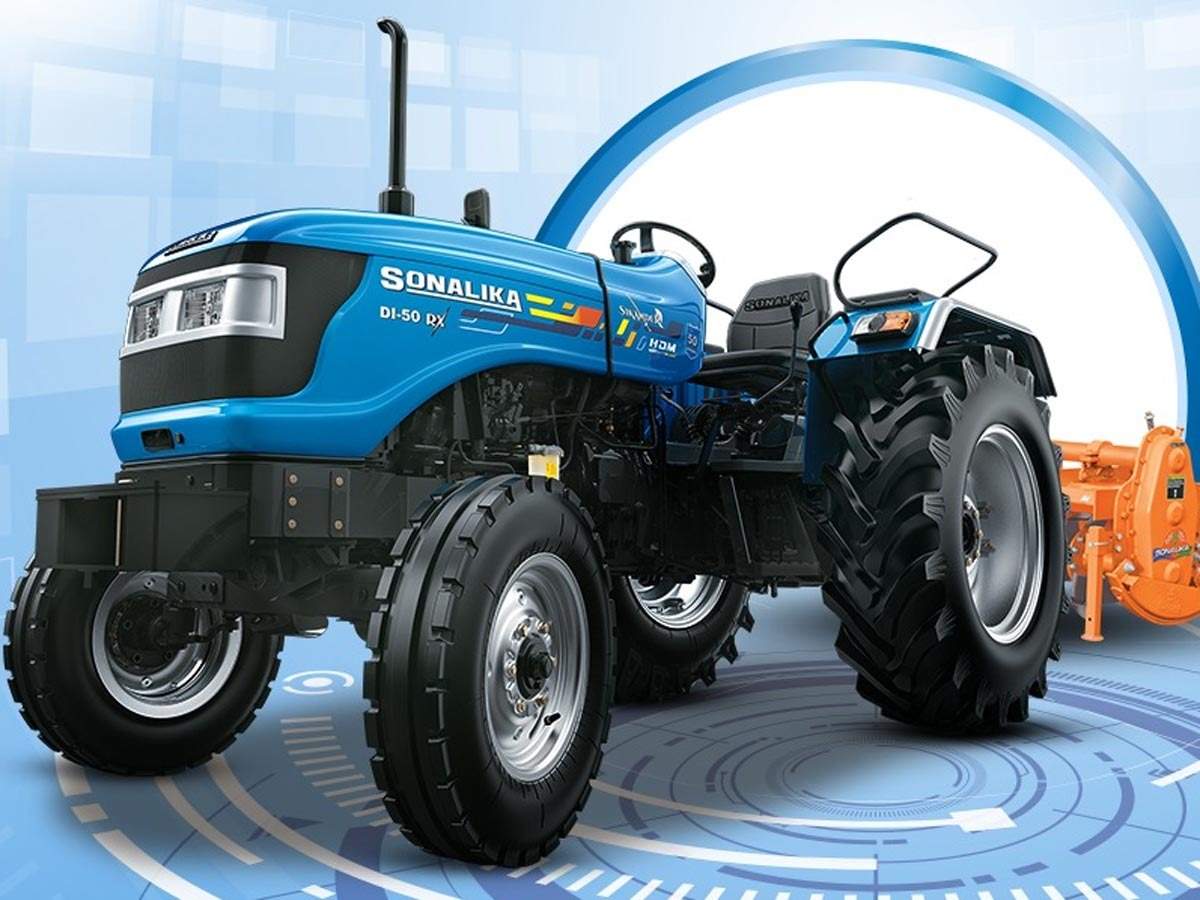Sonalika tractors are the workhorses of Indian agriculture—rugged, reliable, and built to perform in the toughest field conditions. But like any high-performance machine, even a Sonalika needs regular care. One of the most critical systems in your tractor is the hydraulic system, responsible for lifting, steering, and operating attachments. When this system starts showing signs of wear, ignoring them can bring your productivity to a halt. Using genuine Sonalika spare parts during maintenance can make all the difference in ensuring long-term performance.
Here’s how to spot the early red flags—and what you should do before minor issues become major breakdowns.
Understand Your Sonalika Tractor’s Hydraulic System
From lifting heavy loads to steering with precision, the hydraulic system does a lot of behind-the-scenes work in your Sonalika tractor. It powers essential functions like the 3-point hitch, front-end loader, tipping trailers, and more. And when it’s not functioning properly, you’ll feel it—immediately.
Key Hydraulic Components Include:
- Hydraulic Pump – Generates pressure to move fluid and power attachments
- Hydraulic Cylinders – Convert fluid pressure into mechanical force
- Control Valves – Direct the flow of hydraulic fluid
- Hydraulic Fluid – Transmits power, cools and lubricates the system
- Filters and Hoses – Keep fluid clean and flowing without leaks
Even a small issue, like a dirty filter or a minor leak, can reduce performance or cause permanent damage. That’s why staying alert to the warning signs is essential.
Top Warning Signs That Demand Immediate Attention
1. Sluggish or Unresponsive Hydraulic Functions
What You’ll Notice: Your loader lifts slower than usual, or the 3-point hitch hesitates before reacting. Bucket movement may feel lazy or stuck.
What It Means: This is often the first sign that your hydraulic system isn’t working efficiently. Possible causes include low fluid levels, air in the system, or a failing hydraulic pump.
What You Should Do: Check hydraulic fluid levels and look for signs of contamination. If the issue persists, inspect your pump or control valves. Replace faulty components using only genuine Sonalika spare parts to avoid further complications.
2. Unusual Noises from the Hydraulic Pump
What You’ll Notice: You hear whining, screeching, or knocking sounds when operating the hydraulic system.
What It Means: Unusual noises usually indicate cavitation (air bubbles in the fluid) or internal pump wear. Both can severely damage the pump if left untreated.
What You Should Do: Stop using the system immediately and inspect the fluid. Replacing a worn-out pump early using Sonalika spare parts can prevent complete hydraulic failure.
3. Visible Leaks or Fluid Loss
What You’ll Notice: Oil spots under the tractor or visible wetness on hoses, fittings, or cylinders.
What It Means: Leaks are often caused by cracked hoses, loose fittings, or worn-out seals. Even small leaks lead to loss of pressure and can cause the system to overheat.
What You Should Do: Identify and replace damaged hoses or seals. Always refer to the Sonalika tractor spare parts list to ensure you’re using the correct, compatible components.
4. Overheating Hydraulic System
What You’ll Notice: Warning lights may turn on, or parts of the hydraulic system may feel extremely hot to the touch. You may also notice power loss.
What It Means: Overheating can happen due to low fluid levels, clogged filters, or an inefficient pump. It can quickly degrade hydraulic fluid and damage other components.
What You Should Do: Change the fluid and filters if they’re dirty or old. If overheating continues, inspect your pump and flow control valves. Choose specific Sonalika spare parts for high-performance replacements.
5. Jerky or Inconsistent Movements
What You’ll Notice: Implements move in jumps or hesitate mid-operation instead of flowing smoothly.
What It Means: This could be a sign of worn-out control valves or sticky cylinders, which affect fluid regulation. It also poses safety risks.
What You Should Do: Have the valves inspected and cylinders cleaned or replaced if necessary. Use only Sonalika tractor parts to ensure compatibility and durability.
6. Unusual Hydraulic Fluid Appearance
What You’ll Notice: Hydraulic fluid looks cloudy, milky, unusually dark, or smells burnt.
What It Means: This signals contamination, water ingress, or oil degradation—conditions that can cause serious internal damage if not addressed.
What You Should Do: Drain and replace the hydraulic fluid immediately. Flush the system and install new filters. Avoid third-party parts and go for verified Sonalika tractor accessories and fluids for optimal protection.
Why Acting Early Matters
When a hydraulic system starts to fail, it doesn’t go quietly. The signs are there—you just need to know what to look for. Delaying repairs can result in full system breakdowns, unsafe operation, or even damage to other Sonalika tractor body parts.
The good news? Sonalika tractor parts online are widely available and easy to access. Whether you’re replacing a pump, valve, or filter, make sure you choose original or approved components to keep your machine running like new.
Common Hydraulic Parts That May Need Replacement
Your Sonalika tractor’s hydraulic system is made up of several interdependent parts. A failure in just one can affect lifting, steering, and operational efficiency. Here are the most commonly replaced components:
1. Hydraulic Filters
These play a crucial role in keeping contaminants out of the system. Over time, they get clogged, which restricts fluid flow and can overheat your system.
Pro Tip: Replace hydraulic filters as per your maintenance schedule. Don’t wait until there’s a performance drop.
2. Seals and Gaskets
These small parts hold back high-pressure fluid and keep everything leak-proof. Heat, wear, and vibration can wear them out.
Red Flag: If you spot oil near valves, hoses, or the pump, damaged seals or gaskets could be the culprit.
3. Control Valves
These valves direct hydraulic fluid to different parts of the tractor. If they malfunction, you’ll experience jerky or uneven implement movements.
Warning Sign: Random or delayed actions from your loader or hitch.
4. Pumps and Cylinders
The hydraulic pump pressurizes the system, while cylinders convert that pressure into motion. Together, they do all the heavy lifting.
Common Issue: If lifting speed drops or power seems weak, the pump or cylinder may be wearing out.
5. Hoses and Connectors
Crucial for channelling hydraulic fluid through the system. Over time, they may crack, swell, or develop pinhole leaks.
Check For: Wet spots, soft hose surfaces, or visible cracks—these are all signs it’s time to replace them.
When to Call a Professional to Replace Sonalika Spare Parts
Some minor hydraulic issues, like topping up fluid or tightening a connector, are easy DIY fixes. But not every symptom should be tackled in your garage or under a tree.
DIY vs. Diagnosis
If the problem persists after basic checks, it’s time to stop tinkering. Opening up a hydraulic pump or valve without proper tools or training can lead to bigger, costlier problems.
Why Go for Authorised Service Centres
- They use Sonalika genuine parts that ensure fit, performance, and safety.
- Trained technicians can diagnose issues that aren’t visible to the untrained eye.
- They often spot future issues before they become expensive surprises.
Avoid Secondary Damage
Ignoring early signs doesn’t just affect one component. A failing pump can overwork the valves, contaminated fluid can ruin your cylinders, and leaking oil can cause overheating. One loose seal today might cost you a full system replacement tomorrow.
Pro Tips for Hydraulic System Maintenance
Want to avoid downtime and keep your tractor performing at its peak? These maintenance habits go a long way:
1. Regular Inspection Checklist
- Check hoses for wear, cracks, or swelling
- Inspect seals and connectors for oil leaks
- Look at the colour and texture of the hydraulic fluid
- Watch out for slow or jerky implement movements
- Listen for unusual pump sounds during the operation
2. Change Fluid at Recommended Intervals
Old or contaminated hydraulic oil loses its lubricating properties. Stick to the manufacturer’s recommended schedule and always use Sonalika-approved fluid.
3. Smart Storage Practices
Exposure to harsh sunlight, rain, or temperature swings can degrade rubber components and lead to leaks. Store your tractor in a shaded, dry space whenever possible to prolong part life.
Conclusion
A faulty hydraulic system doesn’t just cost time. It risks your entire operation. From delayed work to expensive repairs, the domino effect is real.
Pay attention to early signs, act quickly, and always choose Sonalika spare parts from trusted suppliers—online or authorized service centres. Whether it’s a seal or a cylinder, replacing a worn-out part promptly is far better than dealing with a full-blown system failure.
Keep Your Tractor Running Strong with Genuine Auto Electrical Products
A minor hydraulic issue today can lead to a major breakdown tomorrow. Whether it’s a slow-moving loader or mysterious oil leaks, timely part replacement is key. At Krishna Auto Electric, we not only stock a full range of Sonalika spare parts—like OEM-grade pumps, filters, and control valves—but also a reliable inventory of auto electrical products to power your tractor’s performance from the inside out.
Don’t compromise with low-grade alternatives. Our genuine parts and premium auto electrical products ensure perfect fit, extended life, and worry-free operation.
Call us at +(91)-97124-63530 or +(91)-97120-63530 to get expert help choosing the right components. Get fast shipping, reliable support, and no downtime.
Choose Krishna Auto Electric—your one-stop shop for Sonalika spare parts and auto electrical products that keep you moving forward.

